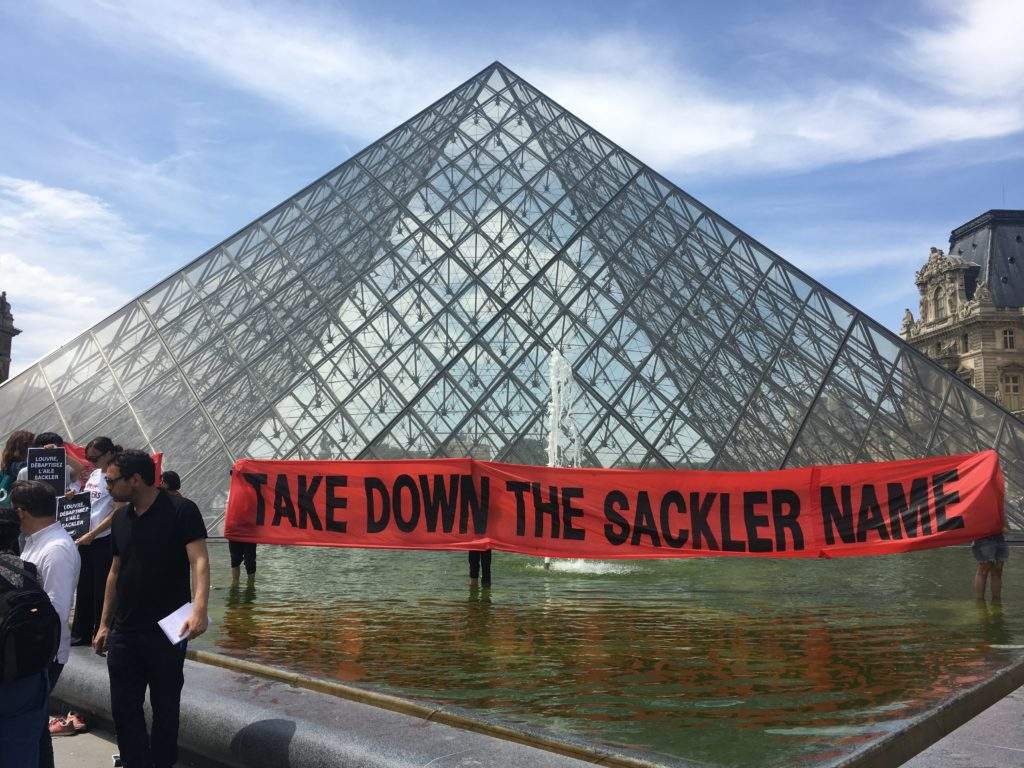Donor is controversial, and Louvre removes his name from all walls and website
The Louvre in Paris has removed the name of a controversial donor from all its walls and website: it is the Sackler family, and the Louvre is the first museum to erase any connection with pharmaceutical industry tycoons. The Sacklers have recently been hit by strong protests in the United States because they have been accused of basing part of their fortune on oxycodone painkillers, an opioid that allegedly causes addiction: in particular, under indictment has ended up a drug, Oxycontin, which in late 2017 was the subject of an in-depth investigation by the New Yorker, according to which the drug’s launch campaign was concocted with the aim of minimizing its side effects. Not only that, there are medical studies that several patients addicted to hard drugs developed their addiction starting with opioid-derived painkillers. This year, New York state prosecutors also opened an investigation to clarify the role of Purdue Pharma (the pharmaceutical company that a branch of the Sackler family owns) in the recent opioid drug epidemic that is estimated to have caused more than 200,000 prescription opioid-related overdose deaths in the United States.
However, the Sacklers are also known for their philanthropy in the arts, and there are several museums they have supported: not only the Louvre, but also MoMA in New York, the Guggenheim, the Smithsonian, the British Museum, the Victoria and Albert Museum, as well as several academic institutions including Harvard University, Oxford and Cambrige Universities, and King’s College London. At the Louvre, an entire gallery, renovated in 1996 to house the collection of Persian and Levantine objects, is named after the Sackler family: as of yesterday, however, the signs bearing the Sacklers’ name have been blacked out. The American collective PAIN (Pain Addiction Intervention Now), in which the celebrated artist Nan Goldin is also a member, had been clamoring for this measure in early July, and had gone so far as to organize a protest demonstration in front of the museum.
However, the Louvre did not link the removal of the Sacklers’ name to the recent news events involving Purdue Pharma: director Jean-Luc Martinez justified the Sacklers’ deletion by attributing it to the museum’s policy that a donor may boast the naming of a room for a maximum duration of 20 years. “The Theresa and Mortimer Sackler Foundation,” reads a Louvre statement, “supported the renovation of the Persian and Levantine art rooms between 1996 and 1997. Since then, there have been no other donations from the Sackler family. On Oct. 10, 2003, the museum’s board of directors decided to limit the naming period for rooms bearing a name to 20 years. This donation is more than 20 years old, so the naming period has legally ended and these rooms no longer bear the Sackler name.” However, if the Louvre had inflexibly applied its internal regulations, it would have had to delete the Sacklers’ name as early as 2016.The newspaper Le Figaro therefore asked why this three-year forgetfulness had occurred, but no response came from the French museum.
The PAIN collective, for its part, says it is satisfied with the Louvre’s decision, though not fully, given the way the museum acted. “Museums,” Nan Goldin noted, “belong to the public and the artists, not to donors. They should be places where people can educate themselves and experience a high form of education through art, not places where they come into contact with dirty money.” Of course, for Goldin, donations are essential to make museums work, but “they have to be conducted ethically.” That on the ethics of donations is a debate that is gaining ground in museum circles: evidence of this is also the criticism that is sweeping the British Museum these days over its partnership with British Petroleum.
In recent months, other major museums, such as the Metropolitan Museum in New York, the National Portrait Gallery, the Tate Gallery, and the Guggenheim in New York, have begun to renounce Sackler donations overwhelmed by the controversy. The Louvre, however, is the first museum to remove traces of their charitable work for the institution. For the collectives and associations protesting the pharmaceutical company, this is an example they hope will be followed by others.
Pictured: the PAIN collective’s protest in front of the Louvre in early July.
 |
| Donor is controversial, and Louvre removes his name from all walls and website |
Warning: the translation into English of the original Italian article was created using automatic tools. We undertake to review all articles, but we do not guarantee the total absence of inaccuracies in the translation due to the program. You can find the original by clicking on the ITA button. If you find any mistake,please contact us.





























